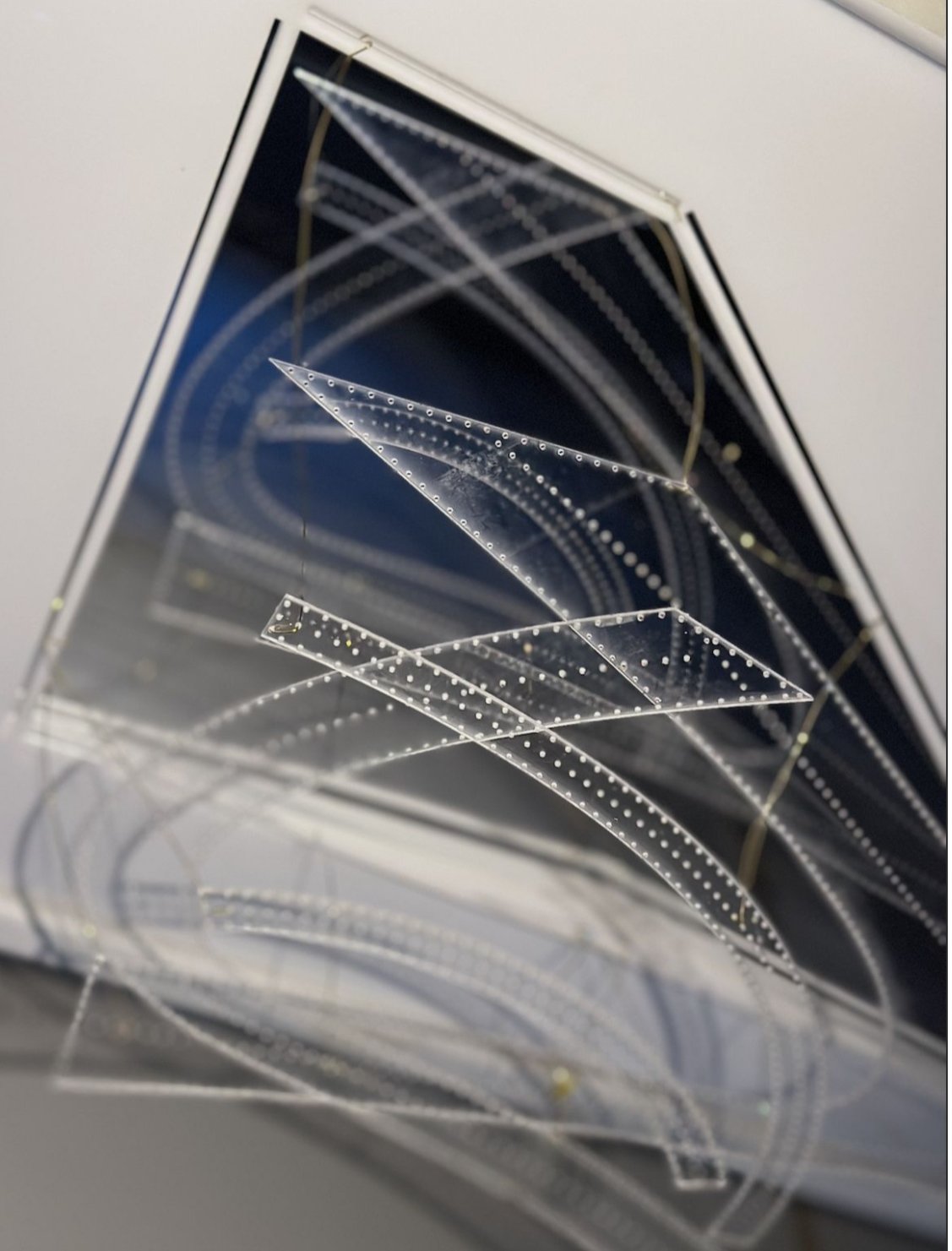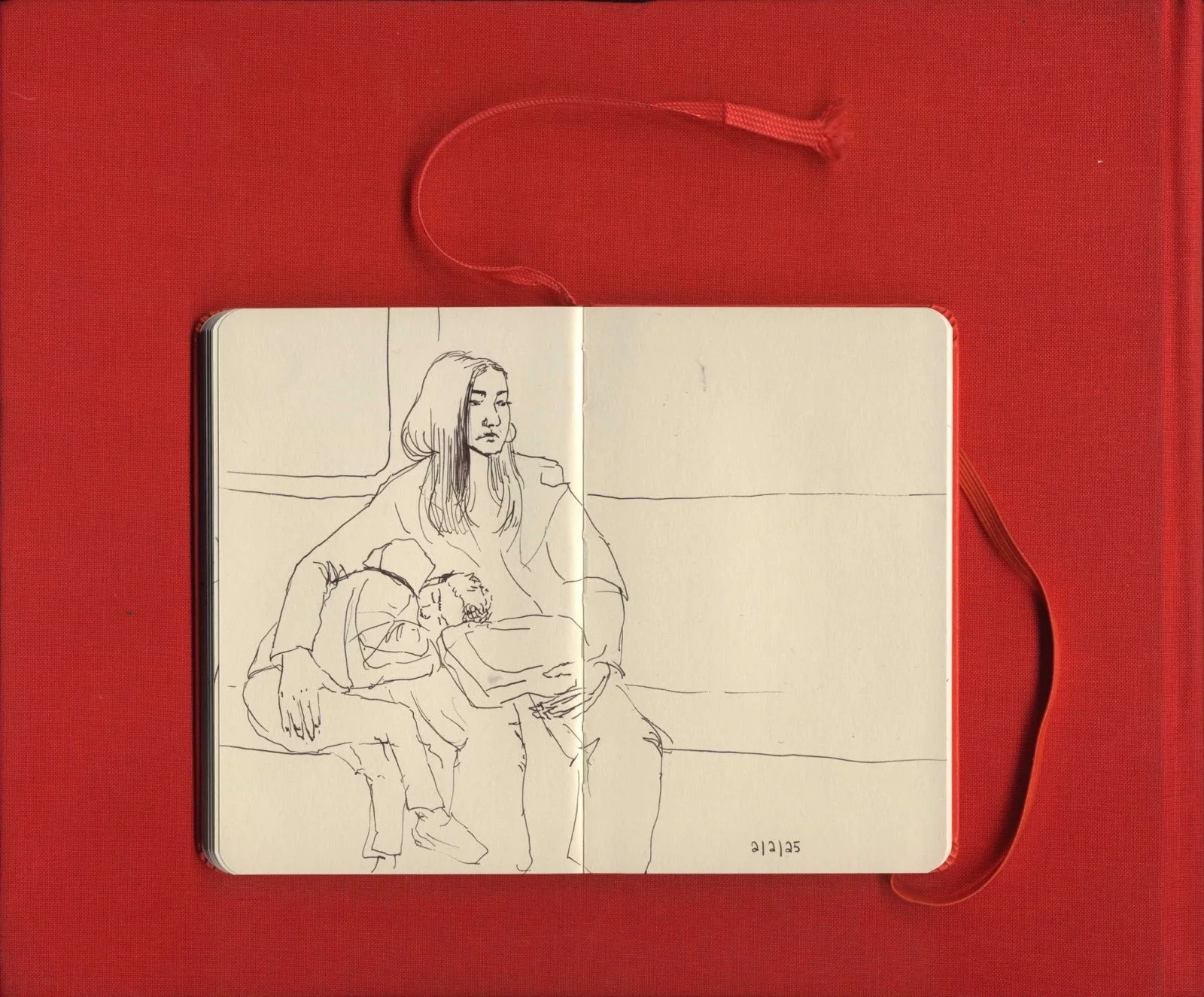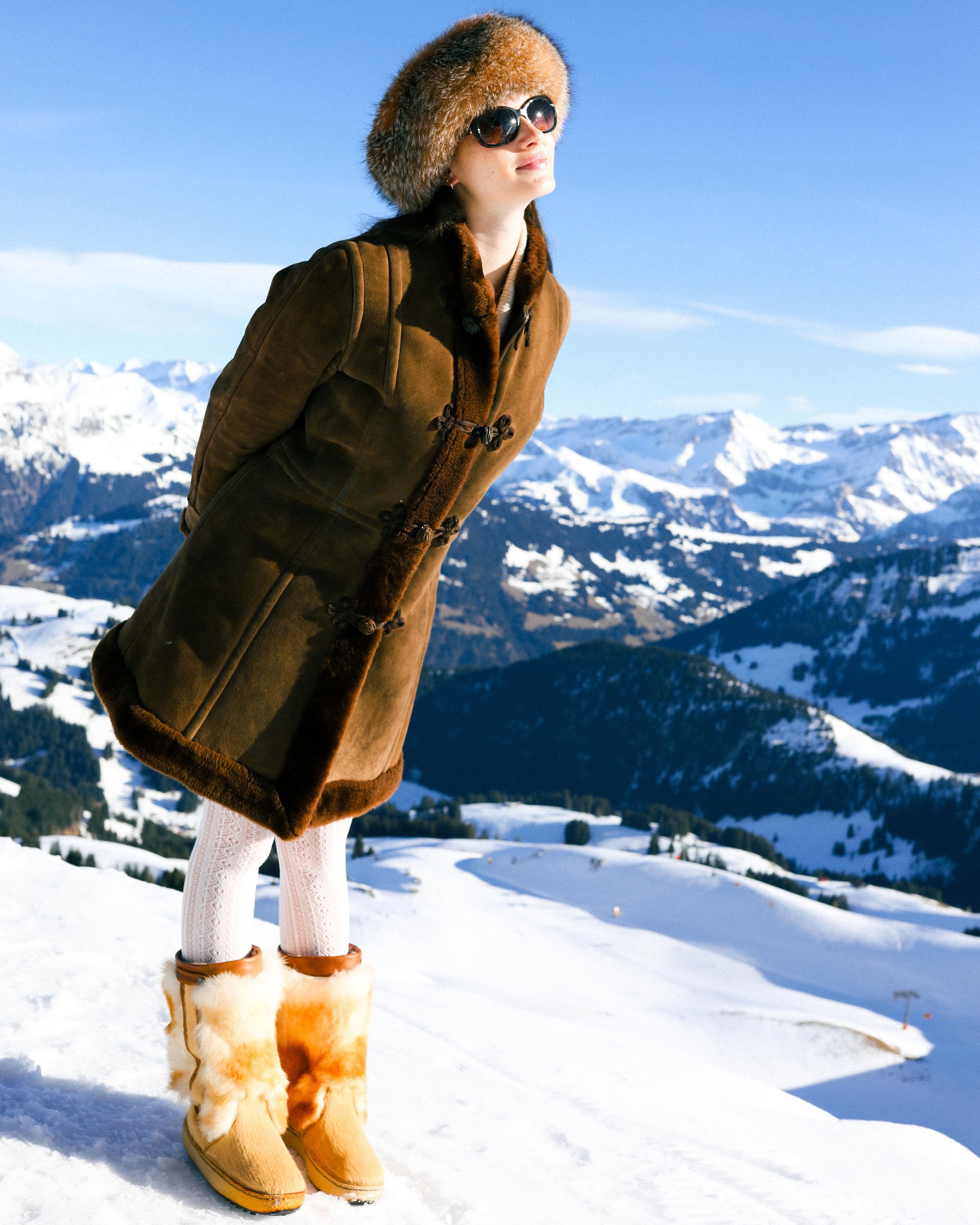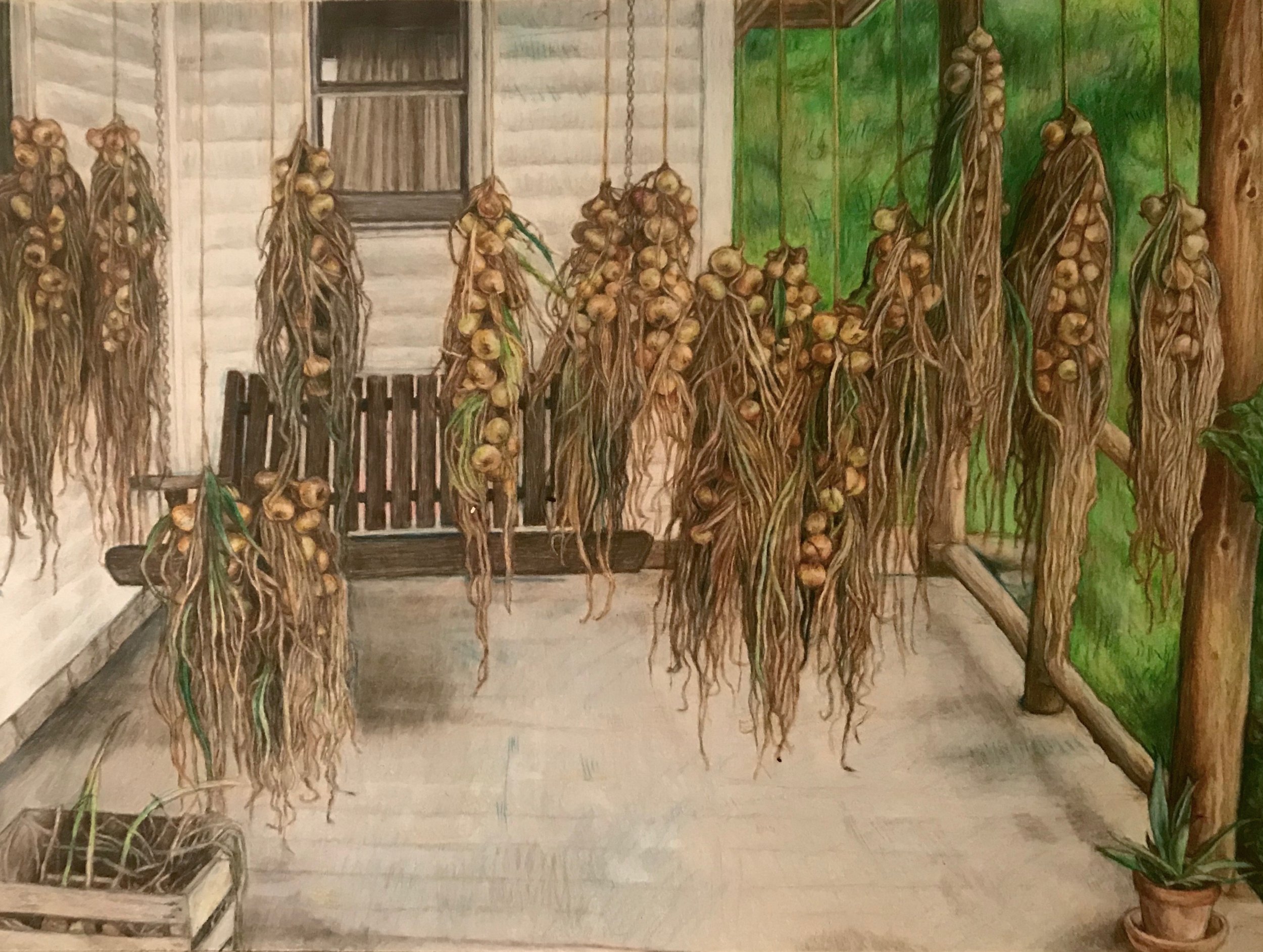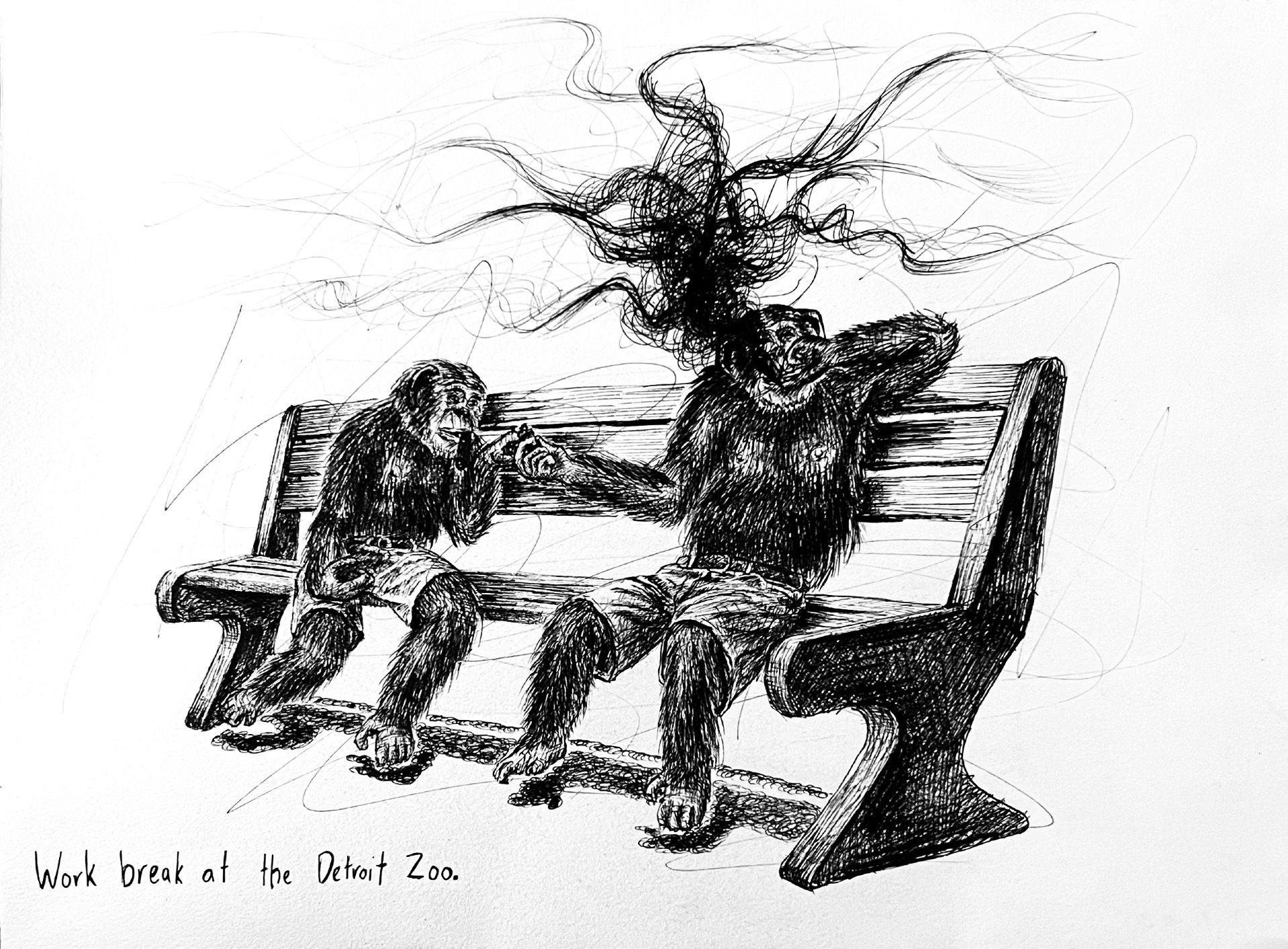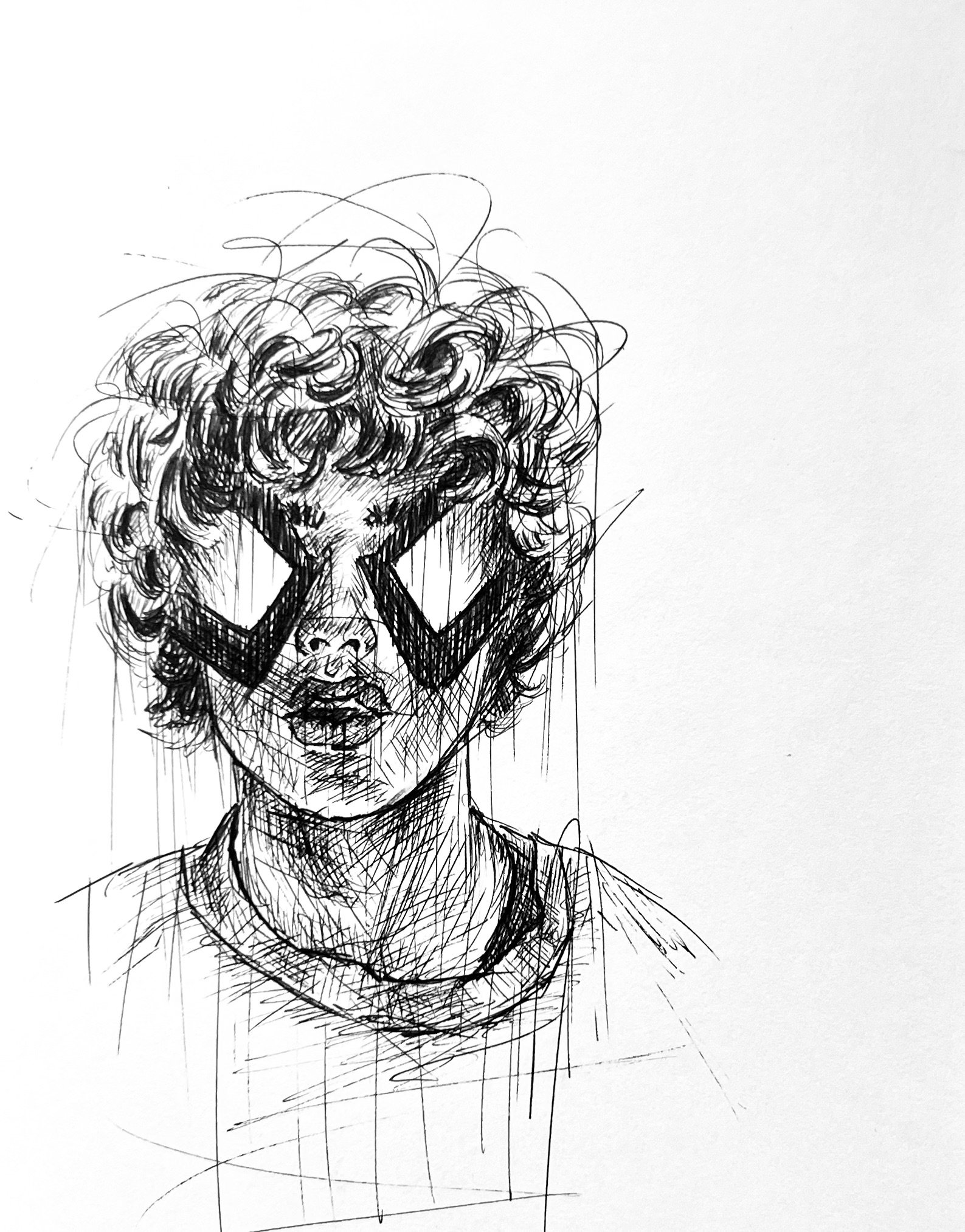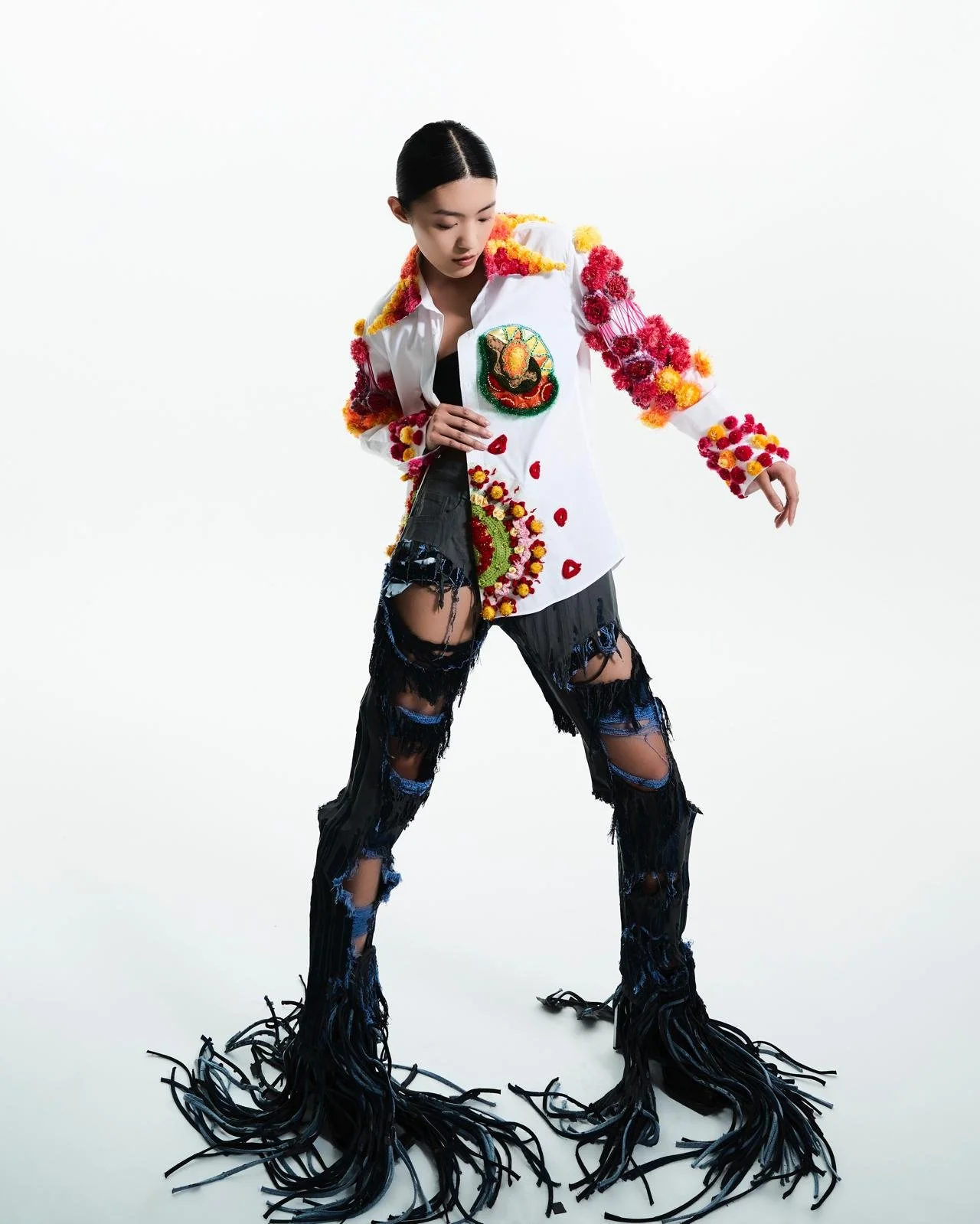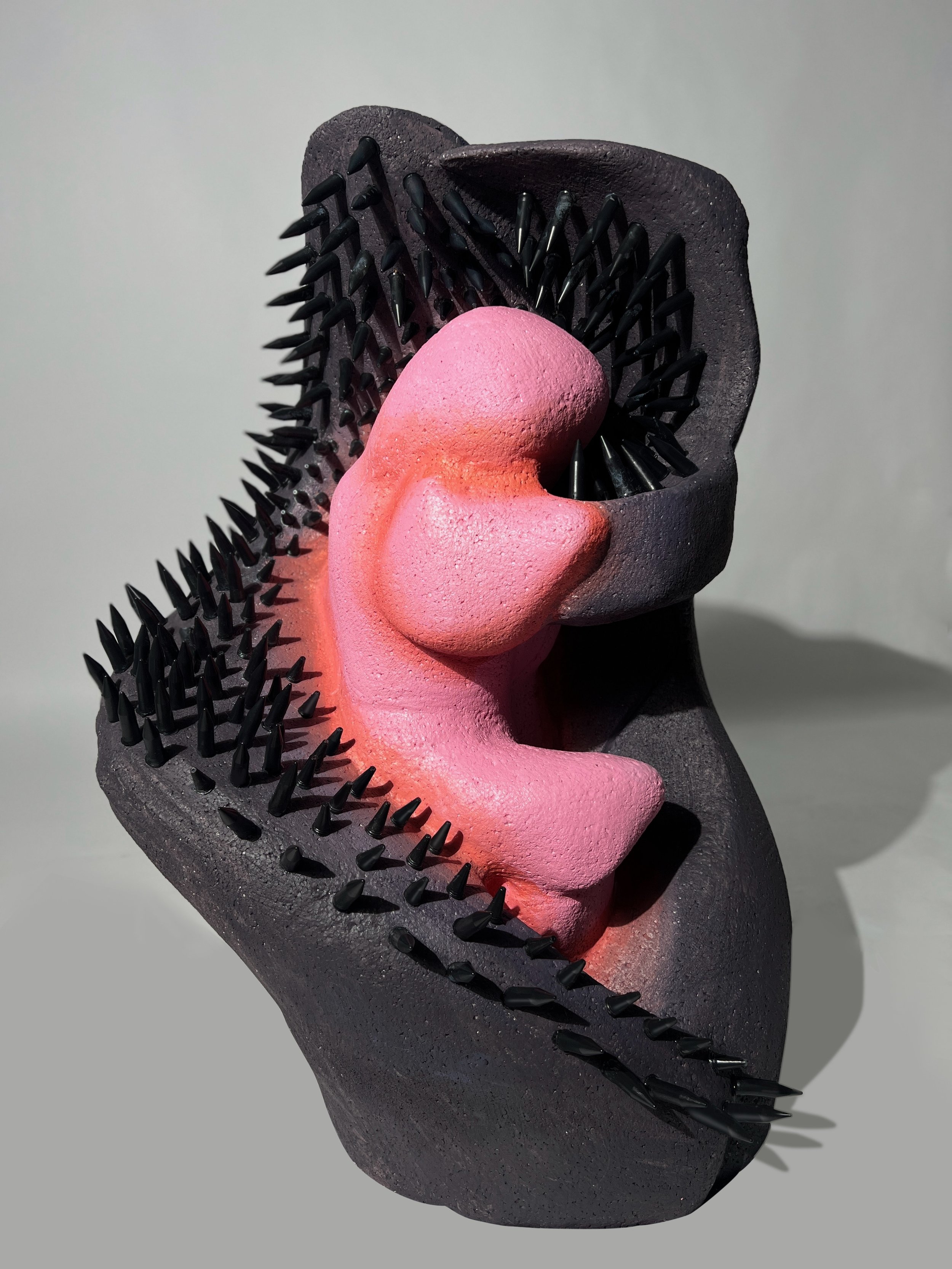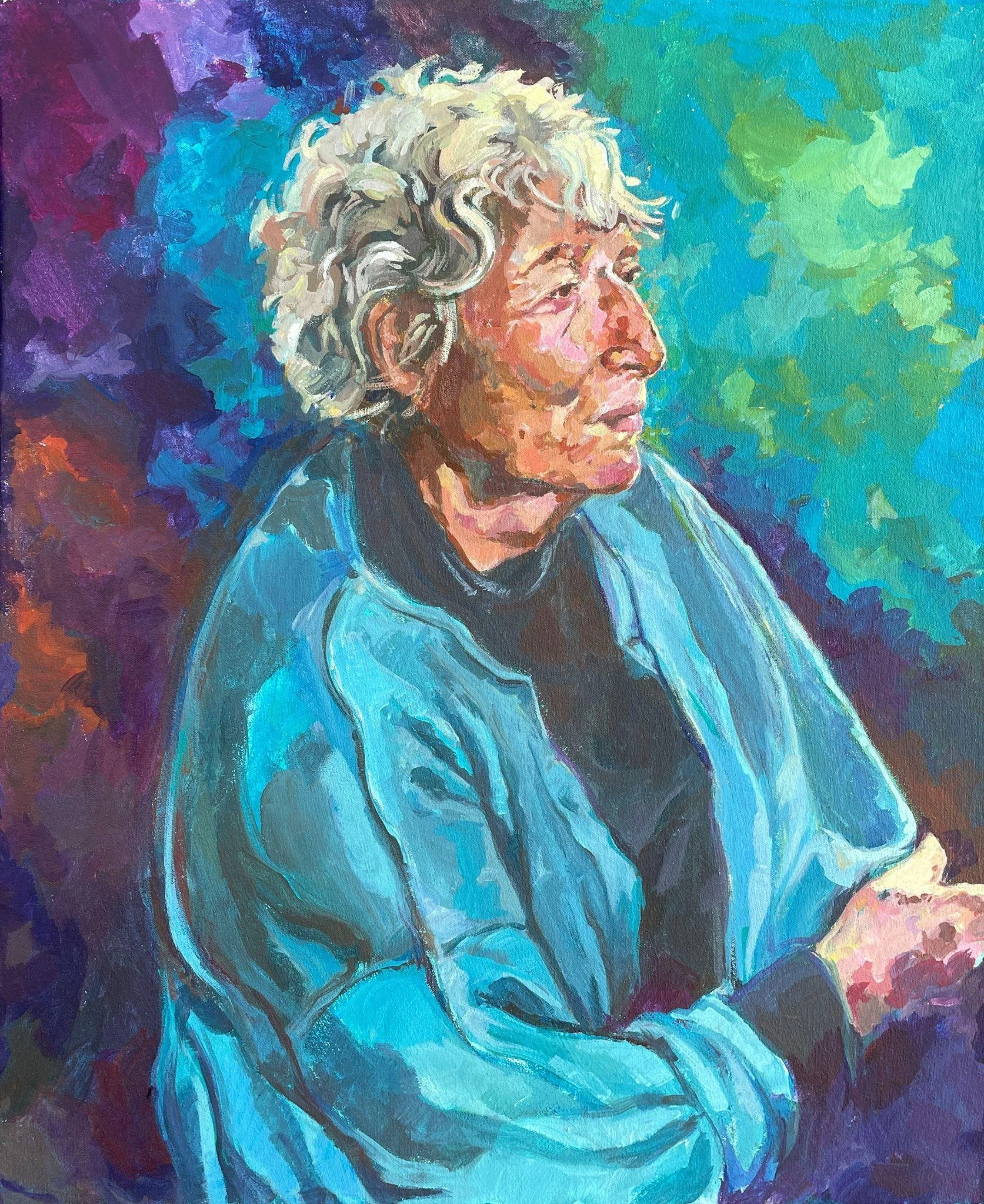Feature by Nathan Ko
Photos by Cas Sommer





Andee Sunwoo Lee is a Senior CC ‘25 at Columbia College, majoring in visual art with a concentration in psychology. She grew up practicing art and exploring different mediums, such as sculpture, photography, and videography. She seems to prefer a lemon Spindrift over a grapefruit one, perhaps stemming from her fondness for the color blue.
I’m one minute late for my interview with Andee. And, even worse, I have no idea how to get into Watson Hall. Luckily, Andee came down to help me. I’ve never met Andee before, and sometimes we, as people, unfairly create ideas of what the artist may be strictly based on our impressions of their art. In the case of Andee, it was really hard to imagine what she might be like based on her art due to the variety of her artistic expressions. In my first few interactions with her, it was clear that she was incredibly approachable. We sat down in her senior studio at Watson Hall. She offered me the nicer chair. I declined out of courtesy. She insisted. I accepted out of joy.
Andee’s passion for art traces back to her roots. Born in Los Angeles, she then moved to Seoul, South Korea, while attending a boarding school in Jeju Island. Her older sister did art from a young age, though she was more interested in the theoretical side of art. Watching her sister practice art was exposure to a different world that Andee could enter. She started to make art at a young age.
A lot has remained and changed since Andee was a kid. When she was a kid, the clash between Los Angeles and South Korea as a locus for home, as well as her father’s love for Daoism, exposed her to the dualities in the world. She attempts to incorporate some of those dualities today. Yet, what changed, or perhaps what became more apparent, is her artistic voice that is now both loud and shy.
“I’m now trying to overcome that fear and insert my voice into the images I make. The main feelings present in my art stem from hiding from people, but screaming, ‘Look at me.’ But when people pay attention, it becomes, ‘Don’t look at me.’ This liminal space I have in my art may be why I’m dabbling in different mediums.”
This longing to own her artistic voice is perhaps most evident in Through The Eyes, Beneath the Soil: A House of Flesh. In this video piece, Andee incorporates the voices of other artists. For example, she uses Kusozu Japanese art and the poems of Na Hye-sŏk (known as one of the first Korean feminist poets), the latter of which incorporated the plot of Henrik Ibsen’s A Doll’s House. Andee also cites Japanese artist Fuyuko Matsui and, specifically, her portrayal of a woman’s body decaying as an inspiration. Amidst all these different historical artistic voices, Andee aims to add her own artistic voice to create a new contemporary understanding of different issues, in particular femininity.
“I was doing a lot of collaborations with my friends who graduated, and this is one of them . This was for an exhibition in Shanghai, and the theme was like Blood Bowl sutra- this Buddhist hell where women are sent to because of the sin of polluting the earth with their menstrual blood. I was inspired by this Buddhist concept. Also, I studied the Japanese artist Fuyoko Matsui, and she has a painting of a female body that’s decaying. It’s a reminder that everything is ephemeral. The female body, sexual issues, it’s all transient. A lot of the images in the video are found images. I was trying to merge those existing narratives into my own image to make a modern adaptation.”
Through the Eyes, Beneath the Soil: A House of Flesh
It’s impossible to talk about this piece without mentioning her Korean background. When noting how the female body can be “liberating but also restricting,” she mentioned that Korea has influenced her views on femininity. In particular, growing up Korean, the concept of a “house” was not necessarily comforting. A house can be seen as a very patriarchal setting, reflecting it, simultaneously, in a domestic and cultural setting. In the video’s last scene, the physical body and the house relate to Andee’s interest in exploring the concept of a house as a “vessel of something very conflicting.” She made the house in the video.
“The house is something I made with 3D tools. It’s a collage I made with decaying flowers. And I always get to add a twist to existing symbols. Flowers, for example, often symbolize life and purity. But what if it's decayed? I always like to add those twists to common symbols. That's why I wanted to make this female body using decayed flowers, referring to the reproductive system. It's supposed to look like a uterus. Combining the image of the female reproductive system and the domestic home as a site of both violence and life is my main motif, and I think [Hye-sŏk’s] poem kind of penetrates that idea of what it's like to be in a body you don’t have autonomy over. These experiences and questions are ones I can’t fully answer, and I just like to leave it to the audience. I'm just leaving narratives and letting the audience do the interpretation.”
Andee mentioned the influence of David Lynch in her video. For example, thinking about the historical narratives surrounding the male gaze, she made the decision to have the video of the flickering eye at the start of the behavior in black and white. And, in the rest of the video, she’s again intentional with color, darkness, and light. These choices are for her “ways to construct [her] own language.” Yet, when she mentioned David Lynch, I immediately thought of the way Lynch would describe Inland Empire. Inland Empire is one of Lynch’s most experimental and abstract movies. It truly is a movie that cannot be encapsulated by words. When asked to explain Inland Empire, Lynch is succinct: “It’s about a woman in danger.” The 3-hour movie provides its audience with the joy of interpretation. This process of letting the audience interpret the work is similar to Andee “leaving narratives and letting the audience do the interpretation.” Yet, in Lynch’s film and Andee’s work, there’s both a clear unease: one cannot just relaxingly eat a melon wrapped in prosciutto while looking at Andee’s video work. One must sit down and watch. And try not to pause, even though there is a fearful addiction to what may unfold next.
The attention to detail in Andee’s work stems from her ascetic work habits. While discussing this video work, she opened a small and dainty notebook. Inside such a notebook, there were so many notes that were deliberate in explaining the project’s inspirations, goals, etc. She told me how she planned for the video through her notebook, and by looking at how packed her notebook was, it was obvious that it took incredible detail to create such a video. In many ways, this asceticism is an art in and of itself. Like Kafka’s The Hunger Artist, or Fasting Buddha Shakyamuni, there’s an awe I felt when looking at her notebook. Like damn, I don’t know if I could do that.
Window and Tree
Compared to her video work, which was planned rigorously in an ascetic fashion, Andee’s photography arises from the desire of the moment. It’s not months of planning on a notebook that drives the shot, but rather the sudden impulse to capture a given moment. This sudden impulse can come from any stimulus- a striking feature or a pretty color. At the start of the interview, I offered Andee a Spindrift: she could pick either the grapefruit or the lemon. She, out of pure instinct, chose the lemon one because of the blue can. She even noted that her choice to attend Columbia was based partly on an instinctual fondness of Pantone 292. These sudden inclinations, such as regarding color, are what determines the photo for Andee.
Andee is deeply intentional with photography, though. For her, photography is uniquely alluring when she can play with its texture. She works to capture the dimensionality of texture with visual mediums. Also, I noticed that her photography captures movement in a sophisticated way. Her photograph of a tree explores the feeling of it being caught in movement, and capturing such a time-specific moment in movement under the backdrop of blue contributes to Andee’s talent of contrasting color with movement in her photos.
For Andee, photography can also emerge from personal reflection. In her Self-Portrait Series, there’s a photo of a shower that again captures the compressed texture, in this case, of water. There’s a feeling with the photo: perhaps a suffocation of sorts. This makes sense, as the dorm shower overflowing can become suffocating. The shower is also an intimate space where one clearly sees their body in a bare manner.
Self Fossil
While this photo may seem distanced from some of Andee’s sculpture work, there’s a similar barren, concrete feeling that emerges in both. In her sculpture Embedded, she depicts a bed in a way that emerges from her experience growing up in boarding school. There was a tension between the bed as a private space as well as a place to socialize with others. There’s also an element that a bed is a way to mark time; we’ve all spent so much time on our bed, and it changes so much over the years as we evolve.
“I tried to see how I could make this bed into a fossil of myself, where I’m traveling between different timelines in my life. In making this piece, I was collecting a lot of objects in my room and putting them in plaster liquid. Then, I would solidify it into the shape of a mattress.”
Embedded
This piece reminded me of a quote from William Carlos Williams: “No ideas but in things.” In a lot of Andee’s works, a lot of grand ideas are being played with (time, femininity, etc.), but they all arise from physical objects. Andee operates as an artist of detail—she takes perhaps banal objects like a bed and reappropriates them in a way that is packed with many layers and intertwining ideas. There’s also that sense of unease: the solid, black legs of the bed and the messy, broken-down mattress render the bed not as a soft home to return to but rather something more solid and painful.
The Nature of Being Born
In her diptych sculpture piece The Nature of Being Born, she again explores the concept of time. In this piece, there are attachments of boobs, barnacles, and the crying faces of babies. She sees a parallel between babies and barnacles as a form of dependent parasites. The nature of their time can also be seen as dependent, as a parasite must take the time from another for its own time. That feeling of unease—the tingling over the left shoulder—emerges in this piece. Perhaps it’s my personal tyrpophobic fear of barnacles, but when I first saw this piece, a silence ushered in my bones. This makes sense, as I felt a similar way with one of Andee’s inspirations for this piece: Damien Hirst’s Mother and Child, Divided, a sculptural diptych with a mother cow and her baby calf separated by the structure of the sculpture.
While a lot of Andee’s work operates within abstraction, there are tangible things that I associate with her as well. Lemon Spindrift. Black clothes. Big smile. Use of the word” “gotcha.” Senior studio with her photographs on the walls. And we don’t ask why. Rather, we enjoy these little things, these little moments. And we interpret it. Like Andee’s photography, we let things be. And I don’t think that’s just her way of art; it’s also the energy she brings. There’s a deep methodical order, an ascetic madness, but all with an energy of ease. Perhaps that’s one of the dualities in her life.








































